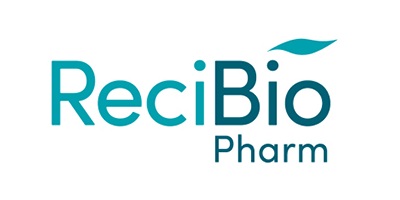After slow market growth following the first RNA therapy launch in 1998 [1], recent clinical and commercial successes have propelled RNA therapeutics into the pharmaceutical spotlight. RNA therapeutics now offer revolutionary treatments for many indications, from rare diseases to neurological disorders and cancer [2]. Developments in alternative RNA modalities, such as the approval of the first self-amplifying RNA (saRNA) vaccine, are also helping to maintain momentum in the RNA therapeutics market [3].
This increased interest is fueling the RNA therapeutics pipeline, with 1,125 therapies currently in development from preclinical stages to pre-registration [2]. Due to the transformative therapeutic potential of RNA therapies and the increasing demand, developers are under increasing pressure to improve the speed and quality of RNA manufacturing processes.
However, traditional RNA manufacturing relies on batch processes, which can create bottlenecks and limit large-scale RNA therapeutic production. In batch manufacturing, discrete steps are performed sequentially, often with prolonged offline sample analysis steps throughout the process. As a result, batch manufacturing is time-consuming, labour-intensive and prone to errors due to manual handling and analysis. The lack of real-time monitoring and control in batch manufacturing also poses challenges in process optimisation and quality control.
Continuous manufacturing has emerged as a promising alternative to traditional batch manufacturing for the production of RNA therapeutics, including messenger RNA (mRNA), saRNA and circular RNA (circRNA). Enabled by process intensification, continuous manufacturing approaches integrate continuous unit operations to provide a streamlined manufacturing process with several key advantages over batch manufacturing, including:
- Reduced manufacturing costs
- Accelerated production times
- Minimised error risk
- Reduced scale-up investment
- Improved product quality.
The International Council for Harmonisation (ICH) and the U.S. Food and Drug Administration (FDA) have recognised the potential of continuous manufacturing and are actively encouraging its adoption [4, 5]. Despite this and the benefits of continuous manufacturing, the process has yet to see widespread application in RNA manufacturing. There are several technical, organisational, economic and regulatory challenges behind this lack of adoption, one of which is the need for precise and robust controls throughout continuous manufacturing operations.
Data-driven continuous manufacturing
Process analytical technologies (PAT) encompass a suite of analytical tools that enable continuous monitoring of critical quality attributes (CQAs) and critical process parameters (CPPs) throughout continuous RNA production. These tools can monitor temperature, pH, substrate concentrations and other factors in real time to provide a comprehensive picture of the manufacturing process. Integrating PAT into continuous RNA manufacturing, including online, in-line and at-line technologies, facilitates data collection at different points in the manufacturing process and helps with understanding how CPPs influence product quality and production efficiency.
The ability to transform the vast amount of data collected by PAT into actionable insights makes data-driven continuous manufacturing a powerful approach to RNA production. Machine learning (ML) can be used to develop sophisticated models and analyse process data to predict potential issues before they arise. Identifying trends and deviations from expected parameters using ML models enables RNA developers to proactively adjust processes and ensure consistent product quality. Models can also be trained to recognise patterns associated with successful mRNA batches, allowing manufacturers to replicate optimal conditions and improve process consistency and yield.
Benefitting from data-driven manufacturing in RNA therapeutics
Implementing data-driven continuous manufacturing offers many benefits to RNA manufacturers, including:
- Enhanced product quality:
Real-time process monitoring and control with PAT minimises the risk of errors and deviations, leading to high-quality RNA production.
- Improved process efficiency:
Identifying areas for process optimisation with predictive models helps to reduce waste and drastically shorten process development and manufacturing timelines.
- Reduced manufacturing costs:
With minimised waste and optimised processes, data-driven continuous manufacturing can deliver lower production costs.
- Faster time-to-market:
Efficient and streamlined processes facilitated by PAT and ML can expedite the development and commercialisation of RNA therapeutics.
The convergence of PAT, data analytics and ML has the potential to transform the RNA therapeutics manufacturing landscape. By leveraging data-driven approaches, RNA developers can overcome traditional manufacturing hurdles and unlock the full potential of their products. As the field of RNA therapeutics continues to evolve, data-driven continuous manufacturing is likely to play a critical role in ensuring the production of innovative, high-quality and affordable therapies for patients worldwide.
References
- Kim YK. RNA therapy: rich history, various applications and unlimited future prospects. Exp Mol Med. 2022; 54(4):455-465.
- American Society of Gene + Cell Therapy Landscape Report Q2 2024. American Society of Gene + Cell Therapy. 2024. Available from: https://www.asgct.org/global/documents/asgct-citeline-q2-2024-report.aspx
- Nature. Self-copying RNA vaccine wins first full approval: what’s next? Available from: https://www.nature.com/articles/d41586-023-03859-w
- ICH Expert Working Group. Q13 Continuous Manufacturing of Drug Substances and Drug Products. 2018. Available from: https://database.ich.org/sites/default/files/Q13_EWG_Concept_Paper.pdf
- Lee SL. Current FDA Perspective for Continuous Manufacturing. MIT-CMAC 2nd International Symposium on Continuous Manufacturing of Pharmaceuticals, Cambridge, MA, USA, 26–27 September 2016. US Food and Drug Administration. 2016. Available from: https://qbdworks.com/wp-content/uploads/2014/06/FDA-on-Continuous-Manufacturing-Lee-2016.pdf
Author:
 Aaron Cowley
Aaron Cowley
ReciBioPharm
Aaron Cowley, Chief Scientific Officer, ReciBioPharm
ReciBioPharm




















